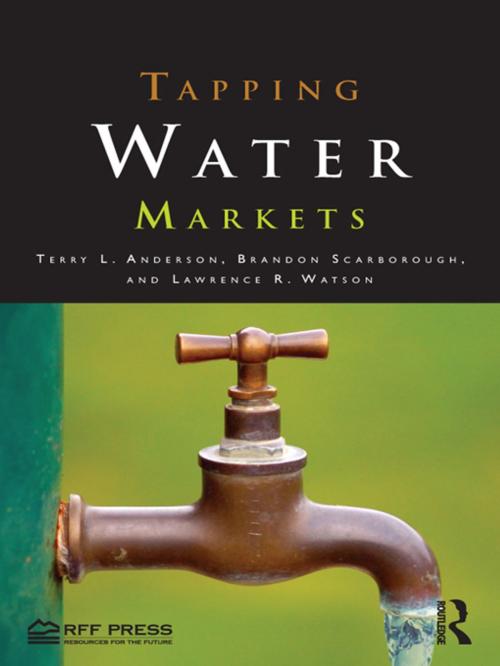| Author: | Terry L. Anderson, Brandon Scarborough, Lawrence R. Watson | ISBN: | 9781136486067 |
| Publisher: | Taylor and Francis | Publication: | August 6, 2012 |
| Imprint: | Routledge | Language: | English |
| Author: | Terry L. Anderson, Brandon Scarborough, Lawrence R. Watson |
| ISBN: | 9781136486067 |
| Publisher: | Taylor and Francis |
| Publication: | August 6, 2012 |
| Imprint: | Routledge |
| Language: | English |
Tapping Water Markets is about the past, present, and future of water markets. It compares water markets with political water allocation, documents the growth of water markets, and explores the ways in which water markets can be improved and implemented further. This book provides up-to-date information of where and why water shortages are occurring and where and why water markets are evolving to resolve conflicting water uses.
Though the main focus is on the United States, it includes examples from other parts of the world to show how water markets are beginning to thrive. It contains institutional detail that is accessible to people who are not economic or hydrologic experts, and comes alive with numerous examples and case studies of water markets.
The book begins with an analysis of water institutions as they have varied over time and location. It then covers a range of discrete water management topics including surface water allocation, groundwater management, environmental flows, and water quality trading. The book concludes with predictions about the future of water scarcity and the ability of water markets to shape that future more positively.
Tapping Water Markets is about the past, present, and future of water markets. It compares water markets with political water allocation, documents the growth of water markets, and explores the ways in which water markets can be improved and implemented further. This book provides up-to-date information of where and why water shortages are occurring and where and why water markets are evolving to resolve conflicting water uses.
Though the main focus is on the United States, it includes examples from other parts of the world to show how water markets are beginning to thrive. It contains institutional detail that is accessible to people who are not economic or hydrologic experts, and comes alive with numerous examples and case studies of water markets.
The book begins with an analysis of water institutions as they have varied over time and location. It then covers a range of discrete water management topics including surface water allocation, groundwater management, environmental flows, and water quality trading. The book concludes with predictions about the future of water scarcity and the ability of water markets to shape that future more positively.















